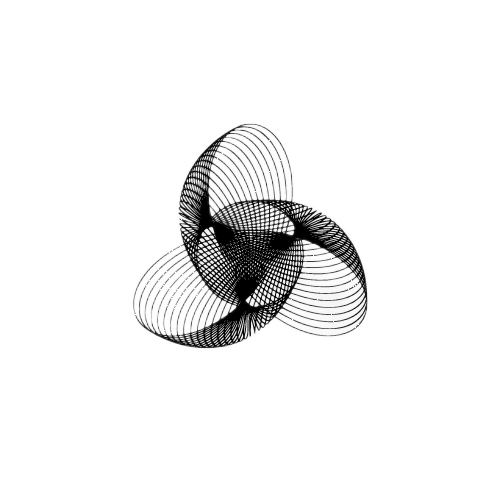What datatype is represented by int in python 3

We all know Python is a popular high-level programming language. One of the fundamental data types in Python is the integer, which represents whole numbers with no decimal places. In this blog, we will explore the integer data type in Python 3, and compare it to the integer data type in Python 2.
The integer data type in Python 3 represents whole numbers, including positive, negative, and zero, with no decimal places. Unlike in Python 2, integers in Python 3 are of unlimited size, which means that there is no “long” data type.
Integer Datatype Range: Python 2 vs python 3
In Python 2, integers have a fixed size and range, which depends on the platform and the version of Python. For example, on a 32-bit platform, the maximum value for an integer is 2,147,483,647.
In contrast, in Python 3, integers can be arbitrarily large, limited only by the available memory. This means that you can work with very large integers without worrying about overflow errors or other issues.
Suppose you are working on a project that involves calculating the sum of a large number of integers. You might use Python 3 to write a program that reads the integers from a file or input stream and adds them up using the built-in sum() function.
For example:
Create a file with integers
vi numbers.txt
234234
234234
234234
23423423
423423
42342
3423
4234
with open("numbers.txt") as f:
# Read the integers into a list
integers = [int(line.strip()) for line in f]
# Calculate the sum of the integers using the built-in sum() function
total = sum(integers)
# Print the result
print("The sum of the integers is:", total)
Output:
The sum of the integers is:', 29109477
In the above example, We use Python 3’s ability to handle large integers to read in and add up a potentially very large number of integers.
The sum() function is able to handle integers of any size, and the program will run correctly and efficiently regardless of the size of the input data.
This cannot be achieved in python2 and the same program has to be changed in a way to handle the large integers
# Open a file containing integers, one per line
with open("numbers.txt") as f:
# Read the integers into a list
integers = [int(line.strip()) for line in f]
# Calculate the sum of the integers using a loop
total = 0
for integer in integers:
total += integer
# Print the result
print "The sum of the integers is:", totalOutput:
The sum of the integers is: 29109477
In above example, we are using loop to add up the integers, since the built-in sum() function may not be able to handle very large integers. This approach is less efficient than using the built-in sum() function, especially for large datasets.
Division: Python 2 vs Python 3
In Python 2, the division of two integers always results in an integer, rounded towards zero. For example, the expression “5 / 2” would evaluate to 2. This behavior can be surprising and lead to unexpected results in some cases.
For example:
# Division of integers in Python 2 >>> 5 / 2 2 # Integer division of integers in Python 2 >>> 5 // 2 2
In Python 3, the behavior of the division operator was changed so that it always results in a floating-point number, even when dividing two integers. For example, “5 / 2” would evaluate to 2.5.
# Division of integers in Python 3 >>> 5 / 2 2.5
To obtain integer division in Python 3, you can use the double slash operator (//), which rounds down to the nearest integer. For example, “5 // 2” would evaluate to 2.
# Integer division of integers in Python 3 >>> 5 // 2 2
Other difference between Python 2 and Python 3
- Syntax: One of the most obvious differences between Python 2 and Python 3 is the syntax. Python 3 introduced a number of changes to the language’s syntax, including print() being a function instead of a statement, and the use of the “u” prefix for Unicode strings being removed.
- Unicode: Unicode support has been significantly improved in Python 3, with all strings being Unicode by default. In Python 2, developers had to explicitly specify Unicode strings using the “u” prefix.
- Print function: In Python 2, the print statement is used to print output to the console, while in Python 3 it has been replaced with the print() function.
- Libraries: While many libraries are compatible with both Python 2 and Python 3, there are some libraries that only work with one or the other. As a result, developers may need to choose between using Python 2 or Python 3 based on the libraries they need to use.
- Future support: Python 2 is no longer receiving official support as of January 1st, 2020, and is considered to be in its “end-of-life” phase. Python 3, on the other hand, is the current version of the language and is actively being developed and supported.
Conclusion
In conclusion, the integer data type in Python 3 is more flexible and powerful than in Python 2, and it is designed to work well with other data types and modern programming paradigms. The changes to the range and division behavior in Python 3 make it easier to write correct and readable code and avoid common pitfalls.
Good Luck with Your Learning !!
Related Topics:
How to Use Python Print to stderr
How to convert a column in text output in Python
How to send JSON data in python flask
Coding Spell | Python Journey | About Us
- How to Fix – TypeError: only size-1 arrays can be converted to Python scalars - 16 October 2023
- How to Implement d’wave qbsolv in Python - 16 October 2023
- Resolve Javascript error: ipython is not defined - 15 October 2023
